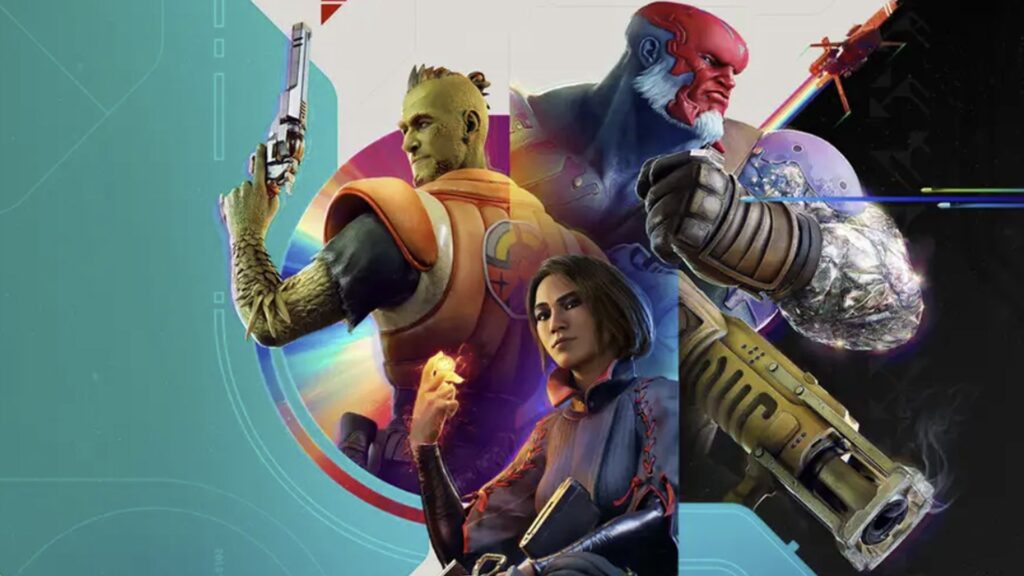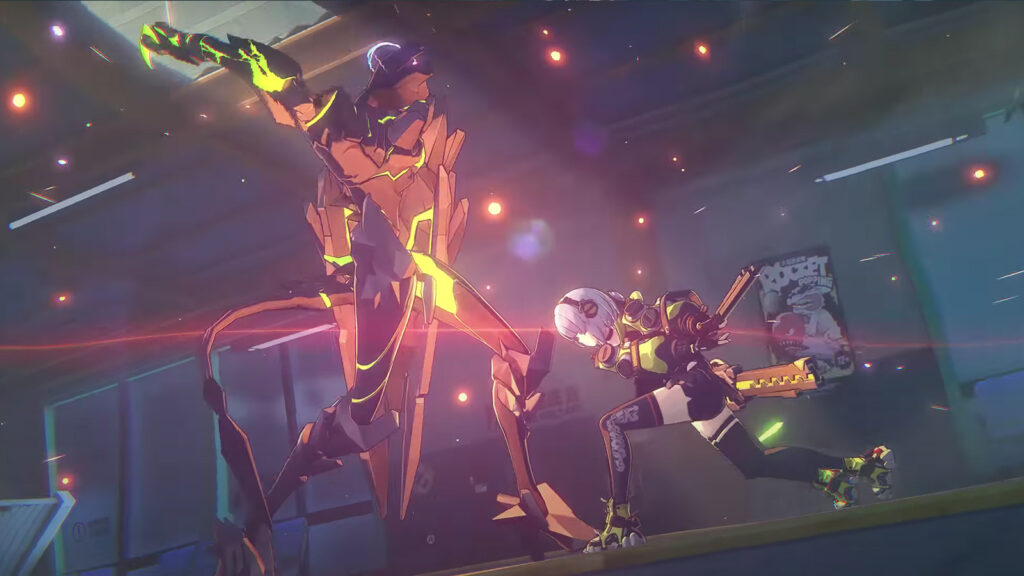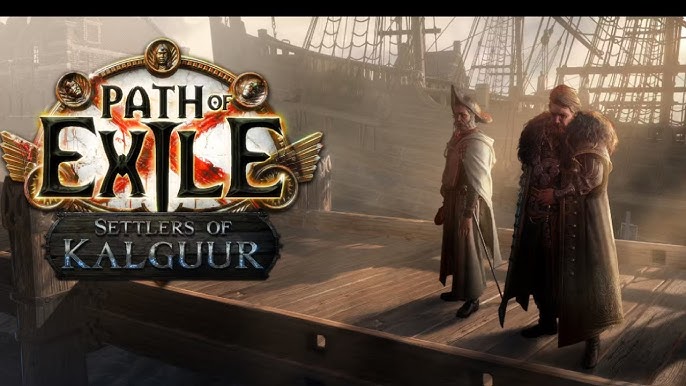In a recent piece I talked about the problems with covering gacha design, and while there are people who vehemently oppose it, you still need to understand that these games make serious money — 40-50 million dollars a month on average, serious money. And it’s something that traditional studios and publishers have been trying to chase after for years now. And yet, the biggest successes approach live service and monetization from two very specific points that everyone seems to miss.
The Pain is Gone
When F2P design first started to become popular with the rise of League of Legends, Team Fortress 2, and the absolute crash of the MMORPG genre in the 2000’s. The first thing that developers tried with MMOs and first-generation F2P was “fun pain.” This is the act of creating intentional barriers and frustration in your game to get someone to spend money to get rid of them. While modern fans may be laughing as they’re reading this, this was considered the norm and standard for many games released in the mid 2000’s/early 2010’s; there were presentations and conventions dedicated to figuring out the right kind of pain.
As mobile and live service design evolved from about 2016-on, this has been phased out of all modern and popular mobile games. As another point, the best-selling games today have also moved away from in-game ads, that were also considered a form of annoying the player. As I’ll talk about further down, the adage about catching flies with honey definitely applies here. But now it’s time to rip off the bandage and explain why every single AAA developer has utterly failed in creating a live service game on par with the likes of the mobile scene.
Multiplayer Doesn’t Work
Stop me if you’ve seen this — a studio decides to create a live service game, and they make a up to four-person chaotic multiplayer experience with loot as the form of progression. From Avengers to Suicide Squad, and many in-between, developers have all copied from the multiplayer formula that arguably goes back to the original Borderlands. The other angle is to go with the hero shooter approach of Overwatch and Team Fortress 2, as with the case of the recently released Concord.
And while yes, games like Dead by Daylight, Rainbow Six: Siege, Fortnite, LoL, and more are multiplayer experiences, and thrive as live service games, here’s the point every designer has to understand — multiplayer is not the selling point for live service design. It is a popular feature, but it’s not what keeps someone playing a live service game and spending money. Multiplayer is an example of user-generated content in a game, as the players themselves are the content, but this in of itself cannot be monetized. Releasing content that purposely gives someone an unfair advantage is the death knell for many live service games.

Concord’s marketing and approach to live service feels 5 years too late (source: Concord)
The greater problem is that many developers assume that multiplayer can act as the padding to give them time to release new content for their game.
But that also raises another point, a new expansion every six months, new story content, or new maps, this doesn’t drive monetization. Games like Genshin Impact, Arknights, and other mobile examples, are not focusing on multiplayer, so how do they make tons of money each month?
What Equals Money?
The question posed above is a lot harder than you might think to answer. As I’ve said before, live service design and monetization go hand-in-hand — you must have a monetization model that will earn you consistent money each month if you expect your live service game to survive. This model must be a factor of your gameplay and development — just having cosmetics is not enough anymore.
There needs to be something new on a frequent basis that adds to the gameplay of your title, that people will want to spend money on. The reason why gacha design has worked so well for studios is the simple fact that these games are selling the player more gameplay with each new character. Both Arknights and Dragon Ball Legends had anniversary events recently with limited characters, and I can guarantee that both games made a lot of money during these periods. Here’s a promotional trailer from Limbus Company that not even for a major event, got more interest and showed more personality than most of the advertisements for games like Suicide Squad and Concord:
Designing monetization around gameplay, whether its single player or multi, is not the same as having monetization built into the multiplayer. The former is introducing new and interesting characters that keeps the meta changing and provides variety; the latter is creating content that directly influences someone’s ability to play and keep up in a multiplayer environment.
Your monetization model must be something that an individual player can go for and get some enjoyment out of it. But above all else, with only two exceptions to this rule that I’ll talk about further down, part of the monetization process of your game is also factored into the “service” part of live service.
Continued Development
I’ve talked about the nature of live service design and where most studios failed at it in the past, and the hardest part of it — continued support. If your studio is only putting out updates every 6 months to a year, full stop, your studio has failed, and your game will die. Live service design requires consistent content being put out that adds and/or changes the current state of the game. While new characters are an easy answer, there are also seasonal events, story re-runs/new stories, gameplay events, mini-games, and more.
At best, there should be something new in your game every week, at the bare minimum, there needs to be new content at least once a month. Just hoping that multiplayer will be enough to carry a game for months without new support is how you end up with a dead game. The opportunity to play the “standard” version of your game should always be available, but fans and long-time players will need something new to keep them coming back once they have gotten used to that mode. This is also why content needs to be evergreen, so that you can reuse or rerun content and game modes for people who missed it the first time. The worst thing you can do with your content is focus on something meant to be experienced only once.
This also leads to the “season” problem that I have seen from games like Fortnite and Suicide Squad: content takes months to build and is only there for a single season of play. Not only does this cause a delay in creating new content, because so much is dedicated to it, but this specifically creates one-offs which means that you’re not adding new long-term gameplay to your title. There are two ways you can handle long-form content — building your game’s design as a long-form story or using new content as a way to experiment.
In Arknights, every side story and new story chapter introduces a new mechanic, new enemies, and a new twist on the gameplay. Once the event is wrapped up, it stays accessible all year round and may be brought back as a re-run event for bonus resources. Limbus Company is telling a long-form story and uses its side stories as intermediary chapters that still relate to the overall narrative. In this respect, every new piece of content directly relates to the story and progression of the game, and while veteran players will not return to it, they still become part of the story that players must clear if they want to see everything.

miHoYo’s success comes down to creating interesting gameplay that once again the monetization feeds into. (source One esport)
Everything in this piece is predicated on one essential point — the game on day one must be great. If your gameplay doesn’t excite with the base characters and without spending one cent, people are not going to play it. What made Genshin Impact work was the very fact that it presented gameplay on a scale that no one else was going for at the time. If you have no intention of spending money on it, you still get a fully realized 3D open-world action game to play. Whereas a lot of the lesser games just feel awkward or bad to play on top of the monetization, and why monetization and gameplay must be figured out from the very beginning.
Exiling Frames
Let’s talk about our two exceptions to these rules and how they have become massive names by being completely different from the rest of the live service market. Warframe and Path of Exile both came out in 2014, both completely free to play, and both have by a large margin, the biggest, most monetized shops in any video game ever. There are thousands of dollars of content someone can buy with new stuff coming frequently. There are games that have been labeled pay-to-win and denounced for far less than what these games sell…so why are they perfectly fine and the fans love them for it?
It comes down to one simple fact — spending money is not required for anything gameplay-related. In Path of Exile, the monetization, while extensive, does not in any way, shape, or form, interact with the act of playing the game. Yes, you can buy quality-of-life upgrades, but none of them are required if you want to play through the entire game from start to finish. The bulk of the monetization is built on cosmetics, with all new game content that gets added in being completely free. Without spending money, you can play one of the largest ARPGs released in the past decade that continues to get bigger with each new season.
Warframe‘s extensive store does sell resources and items that are required for quests and certain events, but everything that is needed to play the game can just as well be earned through general play. Using the in-game 3D printer, it is possible to manufacture new frames and weapons provided you have the blueprints and materials. It is very much designed around offering either time or money as the option to acquire new stuff.

Path of Exile continues to thrive every season by adding more to an already stuffed experience that can be played entirely for free (source: YouTube)
To these two points, spending money in games like Warframe and Path of Exile is different compared to the slew of mobile and F2P games. In these cases, you are spending money for a direct benefit or item — there’s no gacha, no 50/50, no pity systems — if I want X, and I spend Y money, I’m going to get it. Content in this respect is evergreen, some cool, shiny, armor piece, or quality-of-life feature is always going to be useful; whether you have been playing the game for years, or just started the other day. Many gacha and live service games have content that will decay in terms of their usefulness in favor of the latest hot thing. Like-wise, there is no worry about FOMO (fear of missing out), when content remains on the store forever and ever, the only limited time offers are sales and special events.
What makes this work is that unlike every other live service game that must balance their gameplay with their monetization model, GGG and Digital Extremes don’t have that problem. While new content has to obviously fit the gameplay systems in it, they don’t have to worry about adding something that will conflict with their monetization. This affords them far more creativity and options for adding game modes and features that are different from anything else in the game prior. The latest Path of Exile season adds in a light city builder/management mode on top of the additions from previous seasons. And the player is free to interact with it as much or as little as they choose.
It is not possible to create modes that extend the gameplay this far without worrying about the monetization in any other live service game. Another point, while these games do have PvP modes to them, player vs. player content is not the focus of the experience, which also avoids the problem of balancing paid content in a competitive atmosphere.
Speaking of Path of Exile, the biggest point I’m curious about is how this game will fare when Path of Exile 2 is released. Releasing sequels to live-service games is very risky, as you are not only splitting your fanbase, but any and all monetization and content released up until that point. Part of the issues that have hurt Payday 3 was releasing it with far less content and polish as the follow-up to their successful live service game. From reports by people who have played POE 2, the developers are doing the smart thing —POE 2 is going to be an entirely different beast compared to the first game. While there may be fans who will play both titles, the appeal of POE 2‘s design is going to be different than the first. In this respect, there is very little chance of the sequel cannibalizing the fans of the first game. And if it succeeds, this could be the first example of a live service game sequel to stand side-by-side with the first game as its own success.
Concord Concerns and the Future of Live Service
As I was finishing this piece, Concord has just been released and is sadly not doing well. There is a lot to study, and I could discuss from a marketing point of view that would extend this piece even longer, but my recent video should go over the major points.
Instead of being the latest success, Concord is looking like the canary in the coal mine for developers and publishers that the multiplayer live service model is not going to keep working the same way. Just as Genshin Impact set a new standard for the scale of mobile games, there needs to be something new to the formula that hasn’t been seen before; and everyone has seen a 5 v 5 hero shooter.
There are two halves to the formula for a successful live-service game today — you need to make the player care about the gameplay, and you need them to be interested in seeing what’s next. Games like Arknights, Limbus Company, the entire miHoYoverse, and more all keep moving along with new content and stories. Earlier in this piece I mentioned anniversary events as the big-ticket purchases for many mobile players, and they only work if the game is exciting as is.
Making a good game is not enough anymore — that good game needs to have a plan for the next six months to a year’s worth of new content, and that has to be understood by the players on day one. If your game is not interesting enough to play, or there doesn’t seem to be a plan for meaningful support, people are not going to stick around.
For one final point, consumers have been flooded with live service games, and many of them either only play one or two games, or they have sworn off the entire model. You cannot just say “my game is just like X, but better.” You are never going to be able to directly compete with another long-term live service game that has years of support vs. your game on day one. And if you can’t come up with an experience that stands out, then you may not have a live service game that will keep your studio going.
For more on live service design, please read my book “Game Design Deep Dive: Free to Play”
If you would like to support what I do and let me do more daily streaming, be sure to check out my Patreon. My Discord is now open to everyone for chatting about games and game design.

